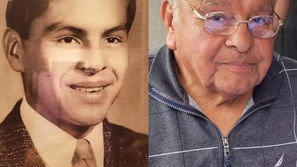Opinion: The next human evolution
- Jim Glynn
- Sep 21, 2021
- 4 min read
The Darwinian theory of evolution is that organisms change over great periods of time to adapt to their environments. About 20 years ago, paleontologist Stephen Jay Gould wrote, “There has been no biological change in humans in 40,000 or 50,000 years.” The implication was that evolution has slowed or stopped.
Then, in 2009, Gregory Cochran and Henry Harpending postulated that human evolution has actually accelerated in the past 10,000 years, citing the “milk revolution” as one example. They point out that adult humans in areas where the practice of dairy farming occurred have developed lactose (the sugar in milk) tolerance, previously found only among infants and toddlers. They point out that about 5 percent of adults in Northern Europe, which has a long history of dairy farming, are lactose intolerant, whereas 90 percent of adults in East Asia, where dairy farming is a recent phenomenon, are unable to tolerate lactose.
Climate change
Over the past few weeks, we’ve witnessed drastic changes in weather patterns both domestically and worldwide. The United Nations’ report that was issued about a month ago states that many of the changes that we are witnessing are irreversible. (See “Dire Warnings — Hell on Earth,” Madera Tribune, 8/14/21.) If the weather extremes that have been recorded for the past few years persist, might the human organism have to change — biologically — to survive a radically altered earth?
Another question to be raised is: If the human organism must change, will uniform change affect all human beings or will change be dictated by the natural circumstances in which human beings live? This presents some interesting possibilities for speculation.
Naked in Seattle
The northwestern United States is afire. It’s been burning for years and indications are that it will continue to burn. States like Oregon, Washington, and Idaho have been covered by a “heat dome.” And Oregon has been at the forefront of decriminalizing certain drugs, like marijuana. Washington, with its long history of plentiful rain and its recent experience with extremely hot weather may soon be very much like the Amazon basin where people did not wear clothes before the coming of civilization.
One wonders if the Sleepless in Seattle will become the Nudists in Seattle. That’s nearly a forgone conclusion for Idaho, second home to wealthy movie stars who are used to clothing-optional beaches and acting in R-rated movies that specify N, AL, V. Perhaps WA, ID, and OR (with its pot-laced laid-back culture) will become the Nude United States of America.
Webfooted Cajuns
As more and bigger hurricanes build over the warm waters of the Gulf of Mexico, inundating Louisiana with “once-in-a-century” rain, annually, people may have to adapt to living like amphibians. Lots of people in the Pelican State already know how to mutate. For example, many people of French descent who once lived in Acadia, Maine, migrated to Louisiana generations ago.
Over the years, these “Acadians” transmuted into today’s Cajuns, noted for their “blackened” dishes, like Paul Prudhomme’s “blackened red fish.” Now, due to climate change which is bringing flooding to the area on a regular basis, they and other Louisiana residents may develop webbed feet to propel them through floodwaters more efficiently.
As they say in New Orleans, “Laissez les bon temps rouler.” (“Let the good times roll.”)
Jerseyite and Yankee Gondoliers
Hurricane Ida demonstrated that, when hurricanes work their way up into the northeast, states with areas that are barely above sea level experience crisis-level flooding. With increased global warming due to climate change, areas like the Borough of Queens in New York and the Counties of Passaic, Somerset, and Essex in New Jersey may be permanently under water.
The infamous cab drivers of New York City and those of neighboring sections of New Jersey may have to replace their middle fingers with new poling muscles to become gondoliers, servicing the floating cities of the future. Roof-dwelling Brooklynites may have no alternative to commuting via gondola to their jobs in the upper-story offices in the structures that are anchored in the submerged area that was once Manhattan Island.
Condensed Californians
People in the Golden State may have to be much smaller than they are now. With huge sections of the landscape wiped out by wild fires, more people will be crowded into increasingly smaller areas. Residents of mountain communities will flee the flames and settle in lower elevations, some of which may be abandoned because they will be under water.
The only solution to squashing people together into a small space may be for babies to be born smaller and to grow up smaller. And they may come into this world with built-in HEPA filters to survive in an atmosphere of wildfire smoke.
Large-lunged mountaineers
There is another extreme. Residents from low-lying cities and states may migrate to mountainous areas in places like Colorado, Wyoming, and Montana where land is well above sea-level and winters will be less severe as the world warms. However, at extremely high elevations, there is less oxygen in the air.
Therefore, children born at or above 5,000 feet will have to be born with larger lungs that can accommodate “thinner” air in order to get the amount of oxygen that is needed for brain development and maintenance.
Population shift
As these changes in ecology occur, the major social problem of the future might be how to accommodate shifting populations. We are likely to see the greatest internal migration since the end of the Civil War.
Currently, a huge chunk of the U.S. population inhabits coastal regions. According to the Bureau of the Census, 40 percent of our total population (127 million people) live in coastal counties. These are the areas that are most threatened by hurricanes, tornadoes, and floods.
A commercial for now-defunct Chiffon margarine warned us: “It’s not nice to fool Mother Nature.”
• • •
Jim Glynn is Professor Emeritus of Sociology. He sometimes writes this column with tongue firmly planted in cheek. He may be contacted at j_glynn@att.net.


























Comments